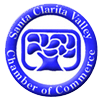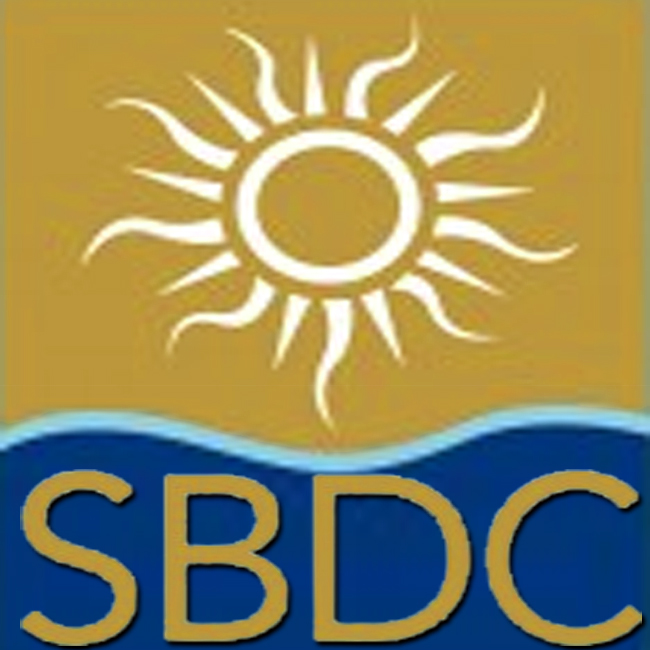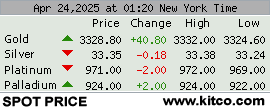 Sierra Bancorp, parent of Bank of the Sierra, today announced its unaudited financial results for the quarter and the six-month period ended June 30, 2016. Sierra Bancorp recognized consolidated net income of $4.086 million for the second quarter of 2016, which represents a slight increase relative to net income for the first quarter of 2016 but a drop of 10% relative to net income in the second quarter of 2015. The decline from net income in the prior year was due in large part to higher non-interest expense, including $128,000 in non-recurring acquisition costs expensed in the second quarter of 2016. For the recently-concluded quarter the Company’s return on average assets was 0.93%, its return on average equity was 8.38%, and diluted earnings per share were $0.31.
Sierra Bancorp, parent of Bank of the Sierra, today announced its unaudited financial results for the quarter and the six-month period ended June 30, 2016. Sierra Bancorp recognized consolidated net income of $4.086 million for the second quarter of 2016, which represents a slight increase relative to net income for the first quarter of 2016 but a drop of 10% relative to net income in the second quarter of 2015. The decline from net income in the prior year was due in large part to higher non-interest expense, including $128,000 in non-recurring acquisition costs expensed in the second quarter of 2016. For the recently-concluded quarter the Company’s return on average assets was 0.93%, its return on average equity was 8.38%, and diluted earnings per share were $0.31.
For the first six months of 2016 the Company recognized net income of $8.122 million, which represents a drop of 2% relative to the same period in 2015. The Company’s financial performance metrics for the first half of 2016 include an annualized return on average equity of 8.39%, a return on average assets of 0.93%, and diluted earnings per share of $0.61.
After declining in the first quarter of 2016, total assets resumed growth in the second quarter of 2016 and now reflect a net increase of $47 million, or 3%, for the first six months of 2016. Asset growth for the first half came from increases of $22 million, or 2%, in gross loan balances, $21 million, or 4%, in investment securities, and $4 million, or 9%, in cash balances. Loan growth for the first half includes a $17 million increase in outstanding balances on mortgage warehouse lines and a combined increase of $5 million in other loan categories. Total nonperforming assets, including nonperforming loans and foreclosed assets, were reduced by $4 million, or 31%, during the first six months of 2016. Total deposits were up $21 million, or 1%, due to a $29 million increase in core non-maturity deposits that was partially offset by a reduction in time deposits. Non-deposit borrowings were increased by $21 million in the first half of 2016 to support asset growth.
“Strength and growth come only through continuous effort and struggle.” – Napoleon Hill
“We were pleased to see strong loan growth and stable core deposits during the second quarter of 2016, in response to the assiduous efforts of our bankers,” commented Kevin McPhaill, President and CEO. “Moreover, our combined endeavors in the first half of 2016 led to the completion of our acquisition of Coast National Bank in early July, which furthers the Bank’s coastal expansion by adding four new locations along with a solid loan and deposit base. The coastal market has great potential for additional growth and we are excited to be a part of it. Moving into the second half of 2016, we plan to work hard to foster favorable growth trends throughout all of our markets,” concluded McPhaill.
Financial Highlights
Net income fell by $471,000, or 10%, in the second quarter of 2016 relative to the second quarter of 2015, and by $173,000, or 2%, for the first six months of 2016 relative to the same period in 2015. Significant variances in the components of pre-tax income, including some items of a nonrecurring nature, are noted below.
Net interest income was up by $177,000, or 1%, for the second quarter and $774,000, or 3%, for the year-to-date period due primarily to growth in average interest-earning assets totaling $45 million, or 3%, in the second quarter of 2016 over the second quarter of 2015, and growth of $75 million, or 5%, for the first half of 2016 over the first half of 2015. The favorable impact of higher interest-earning assets was partially offset by a drop of five basis points in our net interest margin for the comparative quarters and a decline of 11 basis points for the year-to-date comparison, which resulted in large part from continued competitive pressures on loan yields. The comparative results were also impacted by non-recurring interest income, which totaled only $22,000 in the second quarter of 2016 relative to $45,000 in the second quarter of 2015, and $65,000 in the first half of 2016 as compared to $411,000 in the first half of 2015. Non-recurring interest income is comprised of interest recoveries on non-accrual loans (net of any interest reversals for loans placed on non-accrual status), as well as penalties and accelerated fee recognition on loan prepayments.
Total non-interest income fell by $80,000, or 2%, for the quarterly comparison but reflects an increase of $207,000, or 2%, for the comparative year-to-date periods. Service charges on deposit accounts, which represent the largest portion of non-interest income, were up $200,000, or 9%, for the quarter and $579,000, or 14%, for the year-to-date period, due primarily to fees earned from increased activity on commercial accounts and higher overdraft income. Bank-owned life insurance (BOLI) income was about the same for the quarterly comparison but was down $149,000, or 25%, for the first six months due in part to fluctuations in income on BOLI associated with deferred compensation plans. Lower crediting rates have also negatively impacted BOLI income in recent periods, in addition to a drop in net cash surrender values. Investment gains declined, as well, as we realized income from the sale of investments totaling $146,000 and $122,000 in the second quarter and first half of 2016, respectively, relative to $307,000 and $323,000 in investment gains in the second quarter and first half of 2015, respectively. Other non-interest income declined by $117,000, or 6%, in the second quarter of 2016 relative to the second quarter of 2015, and fell by $22,000, or 1%, for the first half of 2016 in comparison to the first half of 2015, due to the $245,000 special dividend received on our Federal Home Loan Bank stock in the second quarter of 2015. The impact of that non-recurring dividend income on 2016 over 2015 variances was partially offset by higher debit card interchange income and dividends received on other restricted stock in 2016.
Total non-interest expense reflects increases of $964,000, or 8%, for the second quarter and $983,000, or 4%, for the year-to-date period. The largest component of non-interest expense, salaries and benefits, increased by $499,000, or 8%, for the second quarter of 2016 over the second quarter of 2015, and $470,000, or 4%, for the first six months of 2016 compared to the first six months of 2015. The higher level of salaries and benefits was the result of salary increases in the normal course of business, higher staffing levels as vacant positions were filled, and temporary salaries and overtime costs incurred in preparation for our recent acquisition (totaling roughly $80,000 for the quarter and $120,000 for the year-to-date period), partially offset by lower group health insurance costs. For the second quarter comparison, personnel expense was adversely impacted by a $98,000 drop in the level of deferred salaries directly related to successful loan originations (which increases current period expense).
Occupancy expense increased by $200,000, or 12%, for the second quarter and $291,000, or 9%, for the first half, due primarily to higher rent and depreciation expense. Other non-interest expense was up $265,000, or 5%, for the second quarter and $222,000, or 2%, for the first half. One of the larger increases within other non-interest expense came in non-recurring acquisition costs, which totaled $128,000 in the second quarter of 2016 relative to a credit of $11,000 in the second quarter of 2015, and were $342,000 for the first half of 2016 as compared to $101,000 in the first half of 2015. Other substantial expense increases are evident in the following areas: foreclosed asset costs, which were up $227,000 for the quarter and $214,000 for the year-to-date period due to write-downs and OREO operating expenses; debit card processing costs, which increased by $114,000 for the second quarter and $162,000 for the first six months; and directors’ stock option expense, which totaled $101,000 in the first half of 2016 due to stock options granted in the first quarter. Significant favorable variances within other non-interest expense include reductions in telecommunications costs totaling $144,000 for the second quarter and $230,000 for the first six months, although some of those reductions include non-recurring credits. The second quarter comparison was also favorably affected by a $94,000 drop in supplies expense, stemming from the timing of payments as well as from costs incurred in previous periods for the rollout of chipped debit cards incorporating EMV technology. In addition, cost increases for the first six months were partially offset by an $83,000 drop in deferred compensation costs for directors related to the aforementioned drop in BOLI income, a reduction of $70,000 in information technology expense due to lower network costs, a reduction of $125,000 in loan servicing expense, and a non-recurring expense reversal of $173,000 in director retirement plan accruals in the first quarter of 2016, subsequent to the death of a former director and the payment of split-dollar life insurance proceeds to his beneficiary.
The Company’s provision for income taxes was 33% of pre-tax income in the second quarter of 2016 relative to 34% in the second quarter of 2015, and 33% in the first half of 2016 as compared to 32% in the first half of 2015. The tax accrual rate fell for the second quarter comparison due to lower pre-tax income and a slightly higher level of tax credits. Since pre-tax income was almost the same in the first half of 2016 as in the first half of 2015, the higher tax provisioning for the first half comparison is the result of a lower level of available tax credits and lower non-taxable BOLI income.
Balance sheet changes during the first six months of 2016 include an increase in total assets of $47 million, or 3%, due to higher loan, investment, and cash balances. Gross loans were up by $22 million, or 2%, as the result of a $17 million increase in mortgage warehouse loans stemming from higher line utilization, as well as increases in non-farm real estate loans and agricultural production loans. With the exception of mortgage warehouse loans, loan growth was facilitated by a $12 million increase in loan participations purchased from other community banks located in higher growth areas of California. The increase in participation loans was split between real estate loans and commercial loans, and our balance of loan participations purchased now totals $18 million. Despite a recent rise in organic lending activity and growth in our pipeline of loans in process of approval, no assurance can be provided with regard to future loan growth as payoffs remain at relatively high levels and mortgage warehouse loan volumes are difficult to predict.
Total nonperforming assets, including non-accrual loans and foreclosed assets, were reduced by $4 million, or 31%, during the first six months of 2016, including the return to accrual status of our single largest remaining nonperforming loan. The Company’s ratio of nonperforming assets to loans plus foreclosed assets was 0.76% at June 30, 2016, compared to 1.13% at December 31, 2015 and 1.90% at June 30, 2015. All of the Company’s impaired assets are periodically reviewed, and are either well-reserved based on current loss expectations or are carried at the fair value of the underlying collateral, net of expected disposition costs. In addition to nonperforming assets, the Company had $15 million in loans classified as restructured troubled debt (TDRs) that were included with performing loans as of June 30, 2016, up by over $2 million compared to year-end 2015 due in part to the aforementioned upgrade of a non-performing restructured loan to performing status.
The Company’s allowance for loan and lease losses was $10.0 million at June 30, 2016, down slightly from the $10.4 million balance as of December 31, 2015 due to the charge-off of certain impaired loan balances against previously-established reserves. Net loans charged off against the allowance totaled $381,000 in the first six months of 2016 compared to $699,000 in the first six months of 2015. Because of the drop in the level of the allowance and the increase in loans during the first half, the allowance fell to 0.87% of total loans at June 30, 2016 from 0.92% December 31, 2015. Management’s detailed analysis indicates that the Company’s allowance for loan and lease losses should be sufficient to cover credit losses inherent in loan and lease balances outstanding as of June 30, 2016, but no assurance can be given that the Company will not experience substantial future losses relative to the size of the allowance.
Deposit balances reflect net growth of $21 million, or 1%, during the six months ended June 30, 2016, including balances from our branch purchase in May which totaled about $10 million at the acquisition date. Total non-maturity deposits were up $29 million, or 3%, for the first half of 2016, but that growth was partially offset by an $8 million reduction in time deposits. Junior subordinated debentures remain the same, but other borrowings were increased by $21 million, or 25%, during the first half of 2016 to support growth in loans and investments.
Total capital of $198 million at June 30, 2016 reflects an increase of $8 million, or 4%, for the first six months of the year due to the rising level of retained earnings, the impact of stock options exercised, and an increase in accumulated other comprehensive income. There were no shares repurchased during the first half of 2016.
About Sierra Bancorp
Sierra Bancorp is the holding company for Bank of the Sierra (www.bankofthesierra.com), which is in its 39th year of operations and is the largest independent bank headquartered in the South San Joaquin Valley. On July 8, 2016, the Company acquired Coast Bancorp and merged Coast National Bank into Bank of the Sierra, thereby expanding its coverage to the communities of San Luis Obispo, Arroyo Grande, Paso Robles and Atascadero, California. The Company now has close to $2 billion in assets and conducts business through 33 full-service branches, a loan production office, an online branch, a real estate industries center, an agricultural credit center, and an SBA center.
Like this:
Like Loading...
Related




 Tweet This
Tweet This Facebook
Facebook Digg This
Digg This Bookmark
Bookmark Stumble
Stumble RSS
RSS




























REAL NAMES ONLY: All posters must use their real individual or business name. This applies equally to Twitter account holders who use a nickname.
0 Comments
You can be the first one to leave a comment.